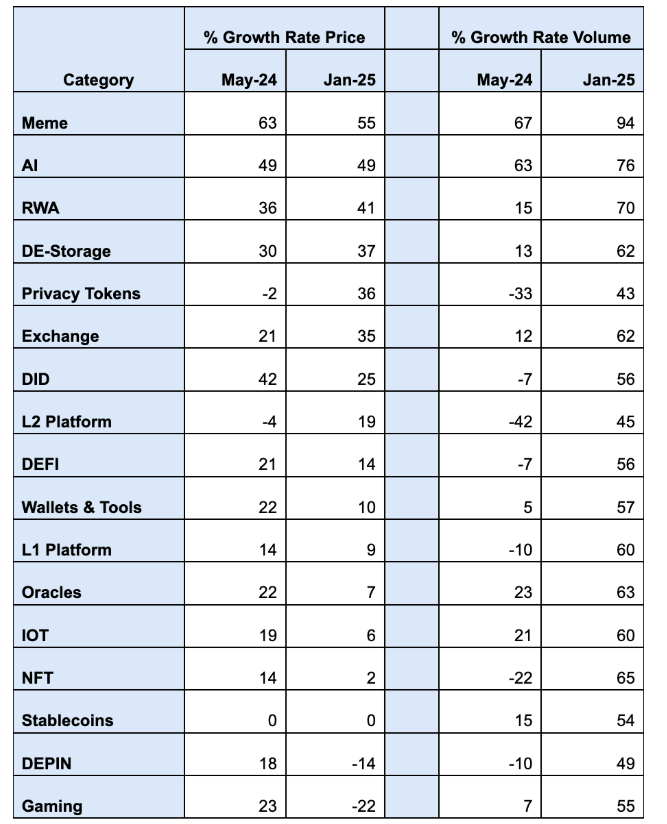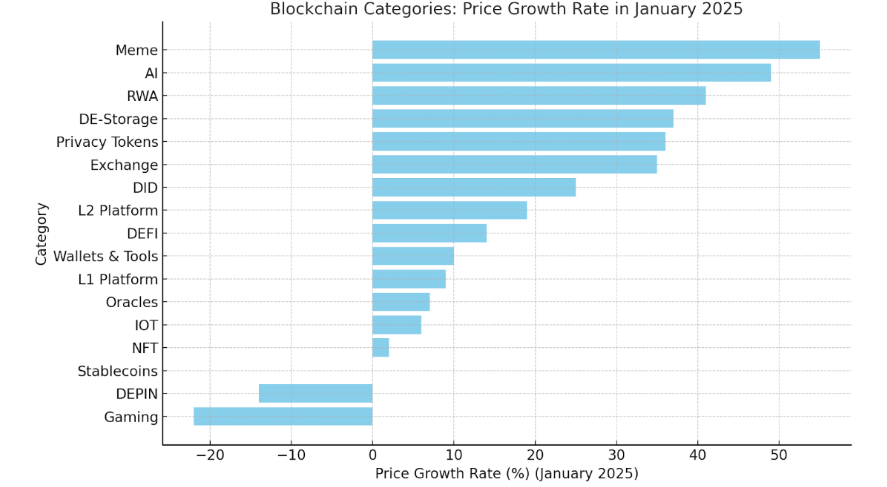Every four years, in the months following the Bitcoin halving, the blockchain ecosystem undergoes more intense public scrutiny. This stage typically lasts over a year, driven by the fundamental economic principle: when the supply of an asset decreases while demand remains stable or increases, its value usually rises. Historically, this supply shock often triggers a market appreciation led by Bitcoin, attracting more users, developers, investors, and policymakers to participate.
During these post-halving cycles, the blockchain industry showcases its projects, technological innovations, and potential applications. However, to date, no blockchain application has completely surpassed existing technologies in any specific domain. Nevertheless, the core advantages of blockchain - immutability, data transparency, and user asset sovereignty enabled by private key encryption - continue to attract innovators. These features have been widely applied in various fields, including borderless payment systems, Decentralized Finance (DeFi), Non-Fungible Tokens (NFTs), gaming systems with on-chain asset records, fan and loyalty tokens, transparent funding and charity distribution systems, agricultural subsidies, and loan tracking.
While past cycles have highlighted the potential of blockchain, the next cycle will bring more trials for new use cases, as detailed below.
Lessons from Past Halving Cycles
The 2012 halving period highlighted the potential of disintermediation and borderless payment systems. Before Bitcoin's inception, payment methods controlled by intermediaries and slow cross-border transactions were the norm - international remittances took days, and check settlements were equally sluggish. Bitcoin showcased a future of seamless payments, and early adopters began tracking the number of merchants accepting Bitcoin. However, scalability issues and rising transaction costs limited Bitcoin's practicality. Ironically, many blockchain networks' fee structures have hindered growth. This cycle ultimately ended with a security breach incident, the most notable being the Mt. Gox hack 20 months after the halving.
The 2016 cycle gave rise to the Initial Coin Offering (ICO) boom, providing broader opportunities for venture capital fundraising. Retail investors could now participate in early-stage project investments, a privilege previously limited to large financial institutions. However, the market was flooded with tokens backed only by whitepapers. Due to a lack of investor protection and accountability mechanisms, many ICO projects quickly collapsed. Most of those projects have since been eliminated, and even the largest ICOs of that era no longer rank among the top 100 blockchain projects.
In 2020, Decentralized Finance (DeFi), Non-Fungible Tokens (NFTs), and "Play-to-Earn" (P2E) games became the dominant trends. DeFi projects promised unsustainable yields of over 100%, primarily by minting more tokens to provide returns rather than relying on actual economic activity. Similarly, NFTs experienced astronomical valuations, some of which were merely worthless pixel art. The hype around the metaverse also eventually cooled, as the widespread adoption of virtual worlds did not materialize. P2E games relied on inflationary token economic models, and their systems quickly collapsed as user growth slowed, exposing their fragility.
The 2024 post-halving cycle began on a stable note, with the United States approving a Bitcoin spot ETF, officially integrating cryptocurrencies into the traditional financial market. Additionally, the blockchain community's influence in the democratic process has grown, marking a significant shift for the industry.
For the first time, crypto assets have entered the financial system, rather than remaining outside of it, which could lead to more balanced regulation rather than outright hostility towards the technology. People are instinctively seeing its utility and have begun to voice their opinions. The United States is poised to play a leading role in the adoption of blockchain technology, a positive trend, especially considering the country's role in other technological innovations and advancements. The next question is: how far will this integration go? Will we see more countries incorporate crypto assets into their national reserves, beyond the few that currently hold them? In addition to regulatory progress, this cycle will also see the scrutiny of several blockchain applications.
Decentralized Real-World Assets
Tokenizing and decentralizing the financing of real-world assets (RWAs) has gradually gained attention. RWAs allow asset owners to directly benefit from blockchain-based financing. Key areas include real estate and housing finance, stocks, bonds, government bonds, agricultural finance, DePIN, and DePUT.
Synergy between Blockchain and Artificial Intelligence
The combination of blockchain and Artificial Intelligence (AI) is becoming a powerful force. The decentralized management of AI models and secure data processing provide new solutions, particularly in privacy protection. AI may go beyond solutions like ZK-SNARKs by managing encrypted data, revealing it only to the owner or authorized law enforcement agencies as per the blockchain's rules.
Micropayments
The traditional financial system cannot support micropayments due to high operational costs. With low-cost transaction models, blockchain is naturally suited for micro-payments, especially in content consumption. This could disrupt outdated bundling practices in media and usher in a new era of seamless payments.
Meme Coins and Celebrity Tokens
The number of meme coins has increased dramatically, with about 10 meme coins now in the top 100 by market capitalization, with little to no actual utility. Low-cost blockchains and user-friendly token creation tools have driven this trend. Meme tokens associated with or related to public figures are also gaining traction, but most still lack practical utility.
Stablecoins
Stablecoins continue to bridge the gap between traditional finance and blockchain. As faster and cheaper blockchains take the lead in this cycle, stablecoins are widely used for payments, challenging traditional systems like slow check settlements and expensive cross-border transfers. Regulatory clarity is expected to drive mainstream adoption of stablecoins.
Trends Revealed by Early Data
Toronet Research tracked the performance of various token categories from January to May 2024 and forecasted trends through December. The findings:

Data sorted by price growth rate as of January 2025. Source: Toronet Research, January 2025.
The data shows that meme coins, AI-related tokens, and real-world asset (RWA) tokens are early growth leaders. Other observations include increased trading volume across all categories, which typically occurs during cycles of heightened blockchain interest and participation, appearing every four years. DePIN projects may not have experienced much growth at the start of this cycle, although one or more innovative projects could potentially make breakthroughs. Layer-2 projects have outgrown Layer-1 projects, potentially absorbing the growth that the latter would have experienced. The results as of January 2025 are shown in the following chart.

Price growth trend bar chart as of January 2025. Source: Toronet Research.
The CoinGecko Q3 2024 Crypto Industry Report reviewed the popular categories ranked by website traffic, and found that the top three categories had similar trends. Another observation from the Toronet Research report was that, as we have seen in past cycles, those application areas that lack real utility often lead to the frenzy of the previous cycle (such as the ICOs of 2017 and the NFTs of 2021), which are usually negated in the next cycle. Developers and industry leaders should strive to guide new users towards sustainable, utility-driven projects in order to reduce market volatility and minimize the disappointment of investors. This will reduce the intensity of the four-year boom-and-bust cycle, as well as the number of those who feel let down, many of whom have already lined up to chase meme coins and ultimately worthless airdrops, only to end up in vain.
Can we break this cycle?
The current cycle presents the most important opportunity for blockchain to achieve lasting impact. With increasing institutional integration, more cautious regulatory commitments, and a shift towards real-world utility, the industry is poised for meaningful growth. The increasing acceptance and integration of blockchain solutions within the broader economy, as well as the potential of impending cautious regulation, may result in a better outcome for this cycle compared to previous ones.







